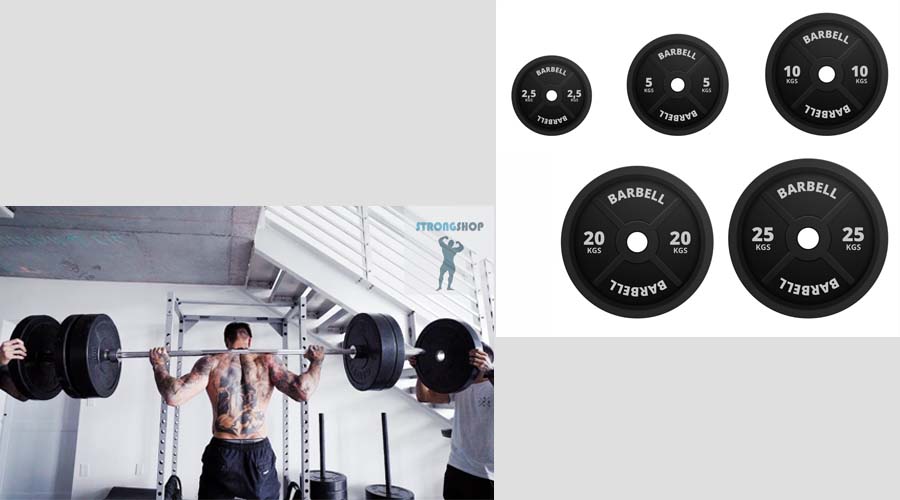Chapter from Mike Mentzer's book "Supertraining. A bodybuilder is not a powerlifter. When he lifts a barbell, he's not going to set a weight record.
His task is to "start" the growth mechanism, i.e. to achieve maximum contraction of muscle fibers..
Static in bodybuilding - the basic principles
In order for the "mass" to grow, it is necessary to increase strength - this is undoubtedly. However, for a bodybuilder, the question is somewhat different. A bodybuilder must constantly increase not the maximum, but the "working weights", increasing the training load. This is a prerequisite for muscle growth. In other words, in bodybuilding, lifting iron is not a goal, but a means.
When a muscle works, it contracts, shortening in length. Full muscle contraction is achieved, for example, at the top of the biceps lift, with full extension of the legs, at the bottom of the pull down.
But in order for the muscle to contract, it is not necessary to lift weights. A muscle has three types of power abilities. The first is positive: lifting the weight from a full stretch to a full contraction position (by the way, this is the weakest of the abilities). The second is static: holding the weight at any point in the amplitude, for example, at the top, "peak" (stronger ability). And the third - negative: lowering the weight under control (the strongest ability). Let's take an example for clarity. Suppose a particular bodybuilder lifts a maximum weight of 45 kg for biceps once. So, he will be able to hold at the peak point at least 60 kg, and lower - at least 75 kg.
Stimulation of muscle growth depends on the amount of power consumption. When you get to "positive" failure, you're wasting about a third of the strength capacity of the muscle. And this means that the mechanism of growth stimulation will work only by one third. Holding the weight at the moment of peak contraction to "static" failure, and then dropping to "negative", you will expend much more strength and therefore better stimulate subsequent growth. However, it must be remembered that with the growth of power costs, the consumption of biochemical resources increases. And this requires reducing the number of sets - just so that the recovery is more efficient.
Some history and statistics
I started experimenting with static contractions a few years ago.
My students no longer focused on lifting the weight to "failure", but on holding it to "failure" at the moment of peak contraction, and then - "negative" lowering. Now I will explain how I reasoned. Let's say you lift a specific weight. Now, it would seem, it is necessary to "hold" it statically until "failure". But if you can hold 60 kg, then lift - only 45! And if you hold the same weight that you lifted, the contraction during the "hold" will not be complete, not maximum!
Therefore, I decided to "exclude" the positive phase altogether. We immediately took more weight, I helped my student lift him to the "peak" point, after which he "held" him until "failure", that is, until the "static" strength was exhausted. And then slowly, under control, lowered the weight, i.e. performed the negative phase of the movement.
One of my students made significant progress in leg extensions. In a very short time, he made the "jump" from 90 kg and 7 reps to 113 kg and 14 reps. Then the progress stalled, and in the next workouts he showed the same result.
It was then that I decided to use the method of "static" reductions. For three workouts in a row, we (without a positive phase) held 113 kg to "failure" on straightened legs with knees fixed - after which we slowly lowered the weight. On the first "static" workout, he was able to hold the weight for 15 seconds, on the second - 22, and on the third - almost half a minute. At the next scheduled leg workout, I decided to check if we had "overdone". Indeed, what if such a super-intense technique led to overtraining, and the dynamic strength fell? And I asked him to do the usual, classic extensions. What do you think? He did 20 full "positive" reps. Great achievement!
Since then, I "prescribe" all my students to hold the weight at the peak point with the obligatory negative lowering. And I can say without false modesty: the results are amazing!
So it turns out that since intensity is the main factor in mass growth, all methods and means are suitable to increase it! In normal training, when a set is performed to "positive" failure, two-thirds of the muscle capacity remains unused! Well, why limit yourself if your body is capable of more!
The "static" technique is best used in isolation exercises, where the movement is made around one reference point. I can name the information in the simulator, lifts through the sides in the simulator, extension and flexion of the legs, lifting on toes. The only complex exercise in which I used "statics" was the pull down on the block with a narrow reverse grip.
"The main "hold" exercises I chose for my students were those in which they could hold the weight for approximately 8-12 seconds on the upper body and 15-30 seconds on the lower body (of course, with strictly controlled "negative" lowering ).At first, I suggested that my wards perform two "static" holds and two "negative" lowerings in a set. Now I see that this scheme works much more effectively: one hold and one lowering in a set, with replacement, from time to time, " static" hold without a positive lift of the "positive * exercise" set to "failure", after which the "static" variant is immediately performed.
What can I say? No one is dissatisfied!"
Here is a training method worth trying.





